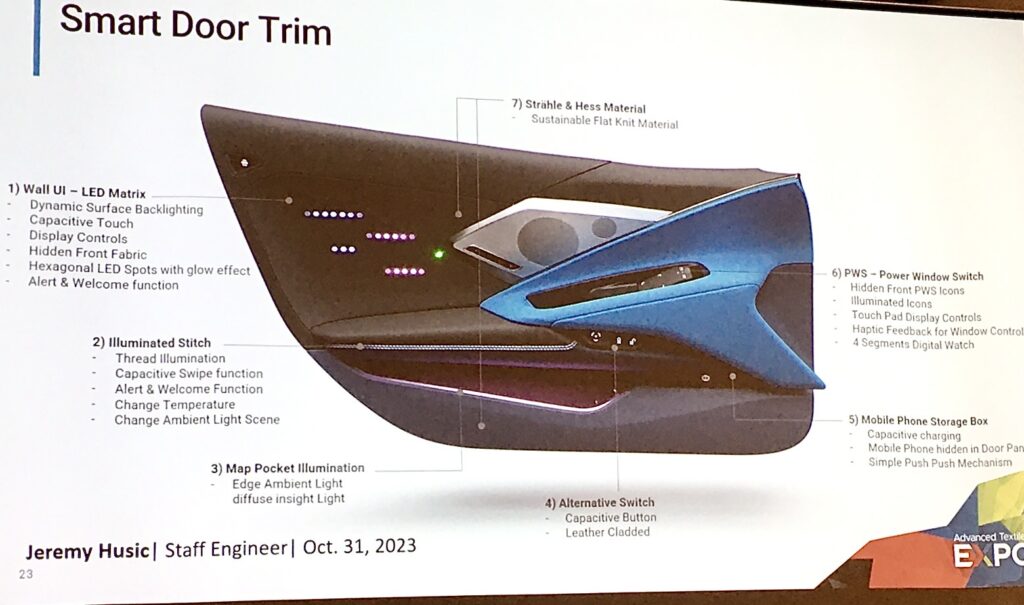
Many of the developments in smart textiles are focused on the fiber and textile structure. However, there is a growing opportunity for the use of textiles within flexible hybrid electronics (FHE) that is of interest to the automotive sector, in particular.
The FHE market is poised to grow by $135 million during 2022-2026, accelerating at a CAGR of 16.17 percent during the forecast period, according to a report by Research & Markets. The market applications include smart surfaces with soft trim, smart surfaces with hard plastic, display and mechanical components.
At a presentation at ATA’s EmergingTechnologies Conference, Jeremy Husic, senior staff engineer at Inteva Products presented on the topic, “The challenges of smart surfaces in automotive trim.” Inteva is a supplier of engineered components and systems for the automotive industry, and Husic is part of the team developing a strong portfolio of smart, soft-surface products for automotive trim.
He is particularly focused on integrating electronics into automotive trim and supporting electronics. The company is currently using leather and thermoplastic polyurethane (TPU) primarily, but they are also interested in looking at textile alternatives.
Textiles have much to offer both technically and aesthetically. A technological advantage is that it brings the controls closer to the occupant, and the material closer to the technology. Icons, for example, need to be as close to the material surface as possible to retain their crisp edge. Processes currently in use include illuminated stitching, embossing, debossing and perforations and in the leather to allow LED back-lighting and human machine interface (HMI).
All of these processes can be facilitated by textiles with additional haptic qualities of softness and sensitivity, and thin, flexible design, balancing light output with thickness. The future offers opportunity and challenges according to Husic. Competition arises from the more established rigid display systems, there are unique challenges in locating an HMI in places where it is not normally used, and designing must consider unintended distraction, as well.
Dr. Marie O’Mahony is an industry consultant, author and academic. She is based in London.
 TEXTILES.ORG
TEXTILES.ORG


